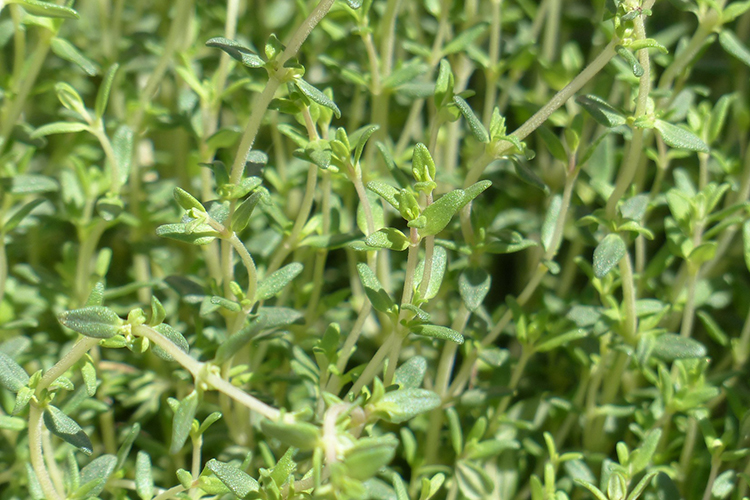
Do you want to grow a plant whose genus (Thymus) is more than 5 million years old? Fossils show imprints of thyme species that are still grown today.
Thyme originated in the Middle East and spread around the Mediterranean Sea. The name probably derived from one of three Greek words: thumus, meaning courage without fear of death; thymon, meaning to fumigate; or thumon, meaning mind, soul or spirit. All three refer to its use down through the ages.
Thyme was used for a variety of things besides adding flavor to cooked food. At different times it has been used as a medicine for epilepsy, melancholy, gout and nightmares. It was burned in temples, made into a liqueur, and even planted in orchards to attract pollinating honeybees. A bath infused with thyme was thought to revive tired soldiers and restore their courage. As recently as World War I, thyme was used as a battlefield antiseptic. In fact, oil of thyme was in short supply at the beginning of the war because our main supplier had been Germany, now the enemy.
Thyme is a hardy perennial in Illinois. There are more than 100 species from which to choose, ranging from a couple inches tall to 15 inches; however, most gardeners grow it as a low-growing herb or as a ground cover. Thyme is divided into two types: prostrate (less than 3 inches tall) and mounding (more than 3 inches tall).
See more: 7 Pollinators to Help your Garden Grow
The scent makes thyme a popular ground cover, especially when grown between stepping stones on a path, because each misstep perfumes the air. It also works well in rock gardens and walls since it can be tucked into small spots.
Growing thyme is quite easy. It is readily available in nurseries as a transplant in the spring and early summer. Some species can be grown from seed, but the seed is extremely small. Plant it in a sunny location that is well drained. Thyme doesn’t mind dry conditions so you won’t need much supplemental watering after it gets established. It does well in average to slightly acidic soil.
If you are growing a culinary thyme, cut it back heavily in early spring to invigorate the plant and stimulate new growth. To use for cooking, hold the tip of a single stem and run your thumb and index finger backward down the stem to remove the leaves. They are so small additional chopping isn’t necessary.
Whether growing thyme for cooking or as an aromatic ornamental, enjoy the fact it predates homo sapiens by millions of years.
See more: Learn to Grow Herbs

